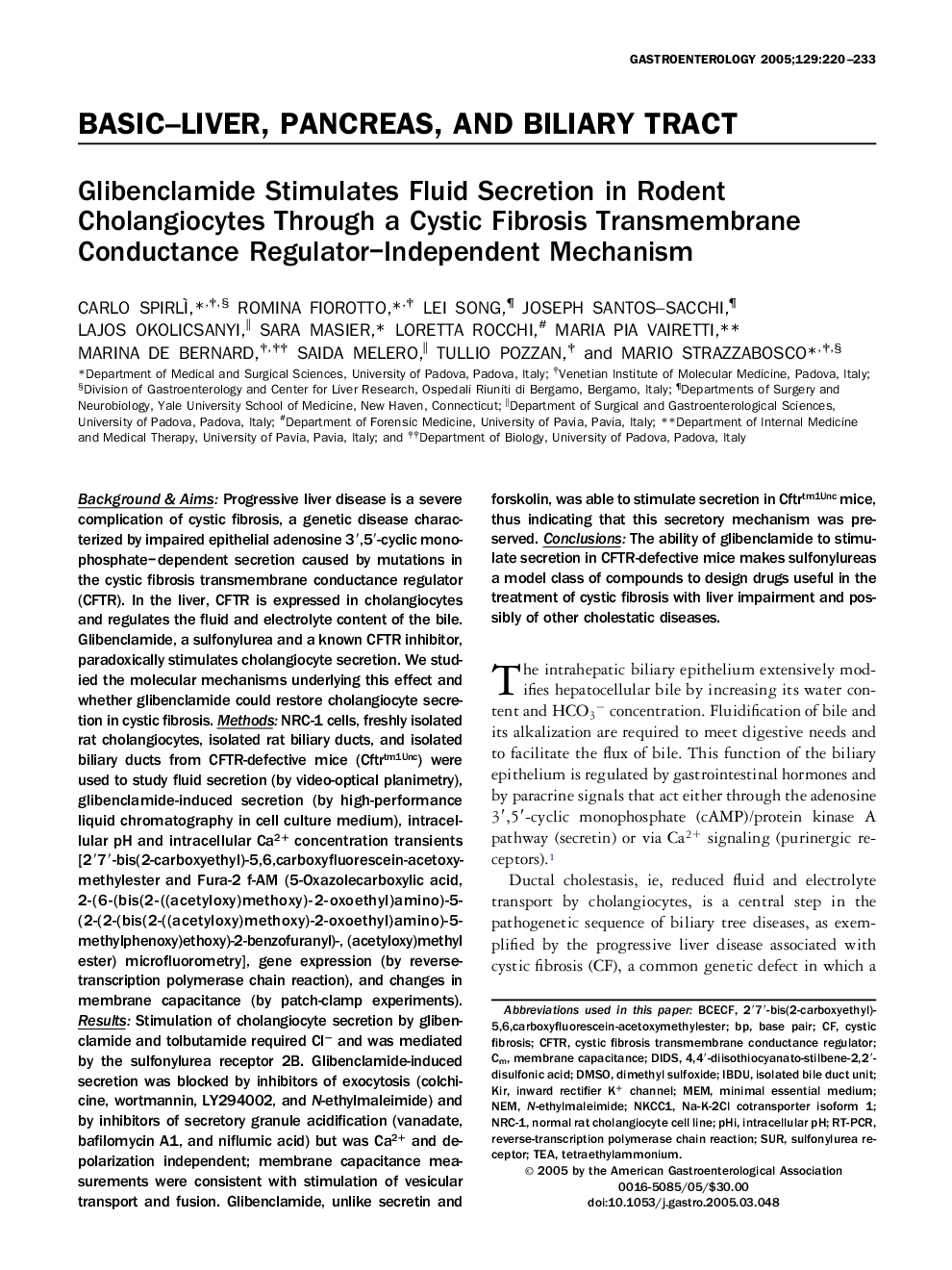| کد مقاله | کد نشریه | سال انتشار | مقاله انگلیسی | نسخه تمام متن |
|---|---|---|---|---|
| 9245183 | 1209942 | 2005 | 14 صفحه PDF | دانلود رایگان |
عنوان انگلیسی مقاله ISI
Glibenclamide Stimulates Fluid Secretion in Rodent Cholangiocytes Through a Cystic Fibrosis Transmembrane Conductance Regulator-Independent Mechanism
دانلود مقاله + سفارش ترجمه
دانلود مقاله ISI انگلیسی
رایگان برای ایرانیان
کلمات کلیدی
RT-PCRKirNKCC1DIDSCFTRBCECFN-ethylmaleimidePHIDMSO - DMSOIntracellular pH - PH درون سلولیsur - برbase pair - جفت پایهminimal essential medium - حداقل وسایل ضروریDimethyl sulfoxide - دیمتیل سولفواکسیدcystic fibrosis transmembrane conductance regulator - رگولاتور رسانایی فرابنفش فیبروز کیستیکMembrane capacitance - ظرفیت غشاءCystic fibrosis - فیبروز کیستیکMEM - مامانNEM - نهreverse-transcription polymerase chain reaction - واکنش زنجیره پلیمراز معکوس رونویسیTEA - چایinward rectifier K+ channel - کانال K + یکسو کننده داخلیsulfonylurea receptor - گیرنده سولفونیل اورهIBDU - یدک کشیده
موضوعات مرتبط
علوم پزشکی و سلامت
پزشکی و دندانپزشکی
بیماریهای گوارشی
پیش نمایش صفحه اول مقاله

چکیده انگلیسی
Background & Aims: Progressive liver disease is a severe complication of cystic fibrosis, a genetic disease characterized by impaired epithelial adenosine 3â²,5â²-cyclic monophosphate-dependent secretion caused by mutations in the cystic fibrosis transmembrane conductance regulator (CFTR). In the liver, CFTR is expressed in cholangiocytes and regulates the fluid and electrolyte content of the bile. Glibenclamide, a sulfonylurea and a known CFTR inhibitor, paradoxically stimulates cholangiocyte secretion. We studied the molecular mechanisms underlying this effect and whether glibenclamide could restore cholangiocyte secretion in cystic fibrosis. Methods: NRC-1 cells, freshly isolated rat cholangiocytes, isolated rat biliary ducts, and isolated biliary ducts from CFTR-defective mice (Cftrtm1Unc) were used to study fluid secretion (by video-optical planimetry), glibenclamide-induced secretion (by high-performance liquid chromatography in cell culture medium), intracellular pH and intracellular Ca2+ concentration transients [2â²7â²-bis(2-carboxyethyl)-5,6,carboxyfluorescein-acetoxymethylester and Fura-2 f-AM (5-Oxazolecarboxylic acid, 2-(6-(bis(2-((acetyloxy)methoxy)-2-oxoethyl)amino)-5-(2-(2-(bis(2-((acetyloxy)methoxy)-2-oxoethyl)amino)-5-methylphenoxy)ethoxy)-2-benzofuranyl)-, (acetyloxy)methyl ester) microfluorometry], gene expression (by reverse-transcription polymerase chain reaction), and changes in membrane capacitance (by patch-clamp experiments). Results: Stimulation of cholangiocyte secretion by glibenclamide and tolbutamide required Clâ and was mediated by the sulfonylurea receptor 2B. Glibenclamide-induced secretion was blocked by inhibitors of exocytosis (colchicine, wortmannin, LY294002, and N-ethylmaleimide) and by inhibitors of secretory granule acidification (vanadate, bafilomycin A1, and niflumic acid) but was Ca2+ and depolarization independent; membrane capacitance measurements were consistent with stimulation of vesicular transport and fusion. Glibenclamide, unlike secretin and forskolin, was able to stimulate secretion in Cftrtm1Unc mice, thus indicating that this secretory mechanism was preserved. Conclusions: The ability of glibenclamide to stimulate secretion in CFTR-defective mice makes sulfonylureas a model class of compounds to design drugs useful in the treatment of cystic fibrosis with liver impairment and possibly of other cholestatic diseases.
ناشر
Database: Elsevier - ScienceDirect (ساینس دایرکت)
Journal: Gastroenterology - Volume 129, Issue 1, July 2005, Pages 220-233
Journal: Gastroenterology - Volume 129, Issue 1, July 2005, Pages 220-233
نویسندگان
Carlo Spirlì, Romina Fiorotto, Lei Song, Joseph Santos-Sacchi, Lajos Okolicsanyi, Sara Masier, Loretta Rocchi, Maria Pia Vairetti, Marina de Bernard, Saida Melero, Tullio Pozzan, Mario Strazzabosco,